
New Photos
July 15, 2007
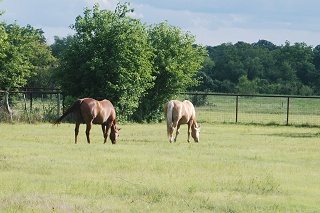 |
|
| Incredibly green for mid-July in central Texas, though a few leaves of the flameleaf sumac have turned to gold or scarlet (it does this in summer, a sort of hint of what's coming later.) The horses graze peacefully in a hot afternoon. | |
 |
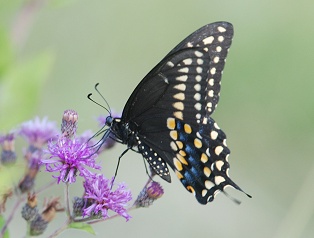 |
| Even in a dry year, the ironweed springs up, straight and tall, crowned with purple. In a year like this, ironweed four and six feet tall can be found on roadsides and in fields. It's hitting its stride in the near meadow, and I don't mow it--it's a great midsummer to early fall nectar plant for butterflies. Here, a fresh male black swallowtail is working his way over every flower. I wanted to show both the upper and under surfaces of the wings. | |
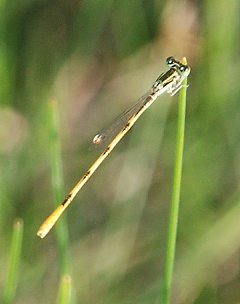 |
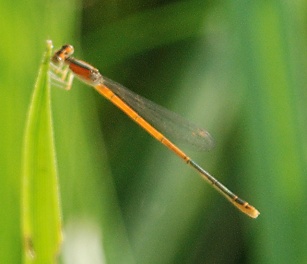 |
| This is the smallest damselfly in the country--it flies low, perching often, and looks from a distance (with my eyesight) like a tiny golden thread. Closer, it has both varied coloring and intricate markings. | Female Citrine Forktails come in two colors: orange and blue. This one, obviously orange-form, glowed in the evening light. |
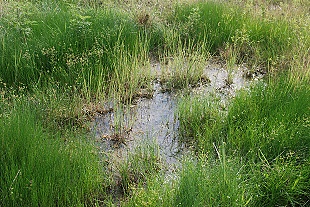 |
|
| A natural drainage channel flows across the near meadow--usually dry, but in flood a broad shallow torrent, and in repeated rains, as now, forming a clear slow-moving current with many little pools surrounded by several species of sedge...the natural "sponge" that used to exist on much of the original prairie, replenishing ground water and reducing runoff that makes floods. This is where I found the Citrine Forktails. | |
 |
|
| Along with tiny damselflies, other small creatures live in the the sedges. This one is a tiny spider, smaller than my little fingernail...it stayed on the other side of its not-very-concealing stem from me and my camera. | |
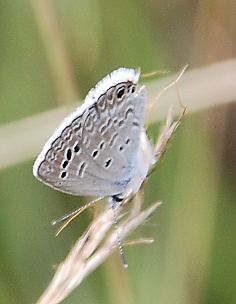 |
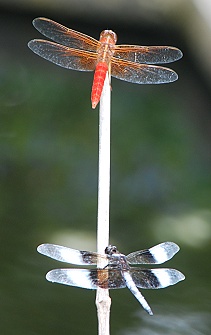 |
| A new species for the place this week... a Reakirt's Blue, Hemiargus isola. It perches with its wings folded nearly all the time, but in flight shows a good rich blue on top of the wings. | All the dragonflies at the lily pond prefer this perching stick to others. Before we had put sticks out, they argued over who got the "best" water iris leaf for a perch. Now it's this stick. When both the Neon Skimmer and the Widow Skimmer male are perching, the Neon Skimmer always gets the top spot, and usually perches farther down the stick...but this time they posed very nicely. |
![]()

